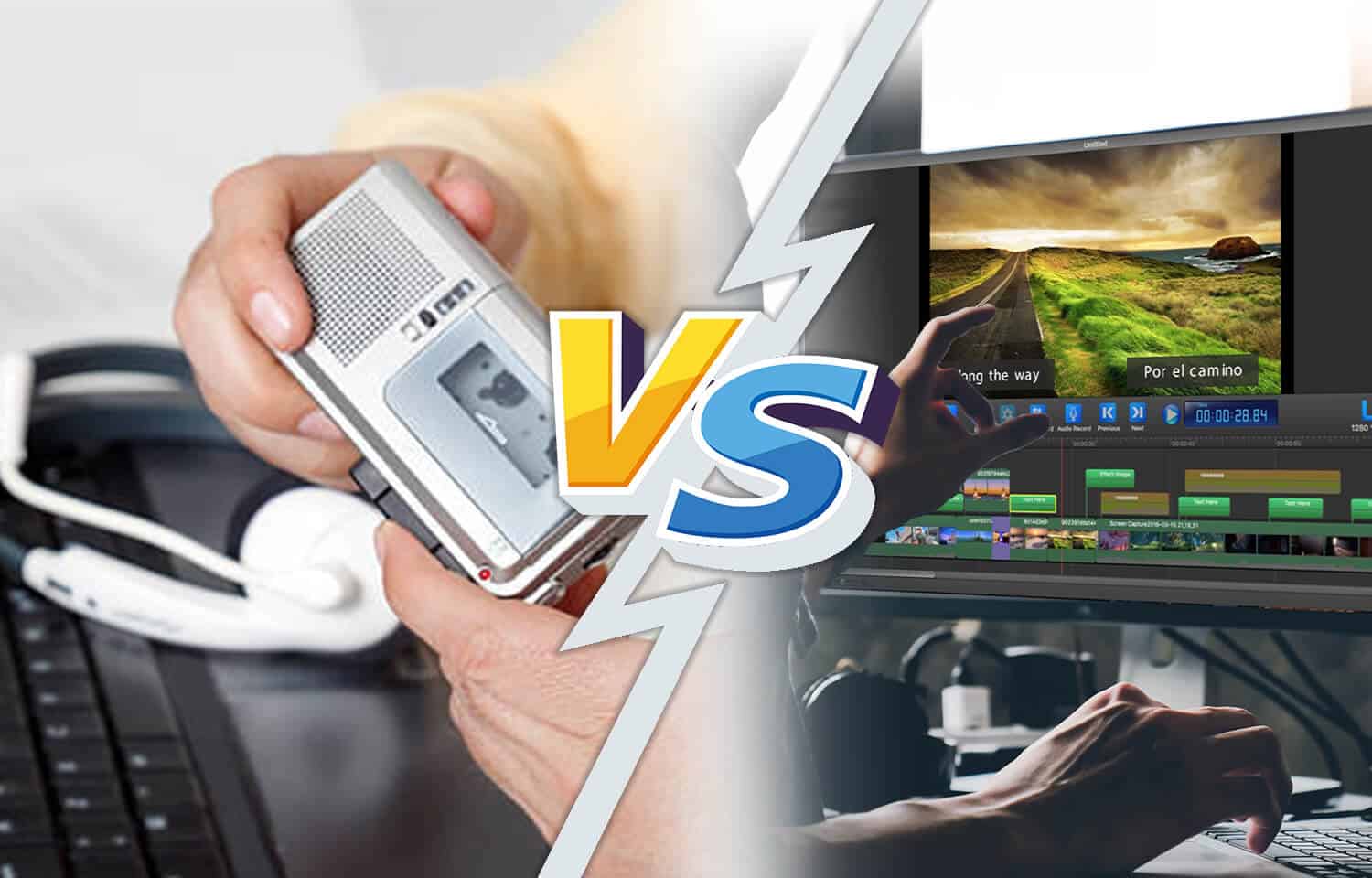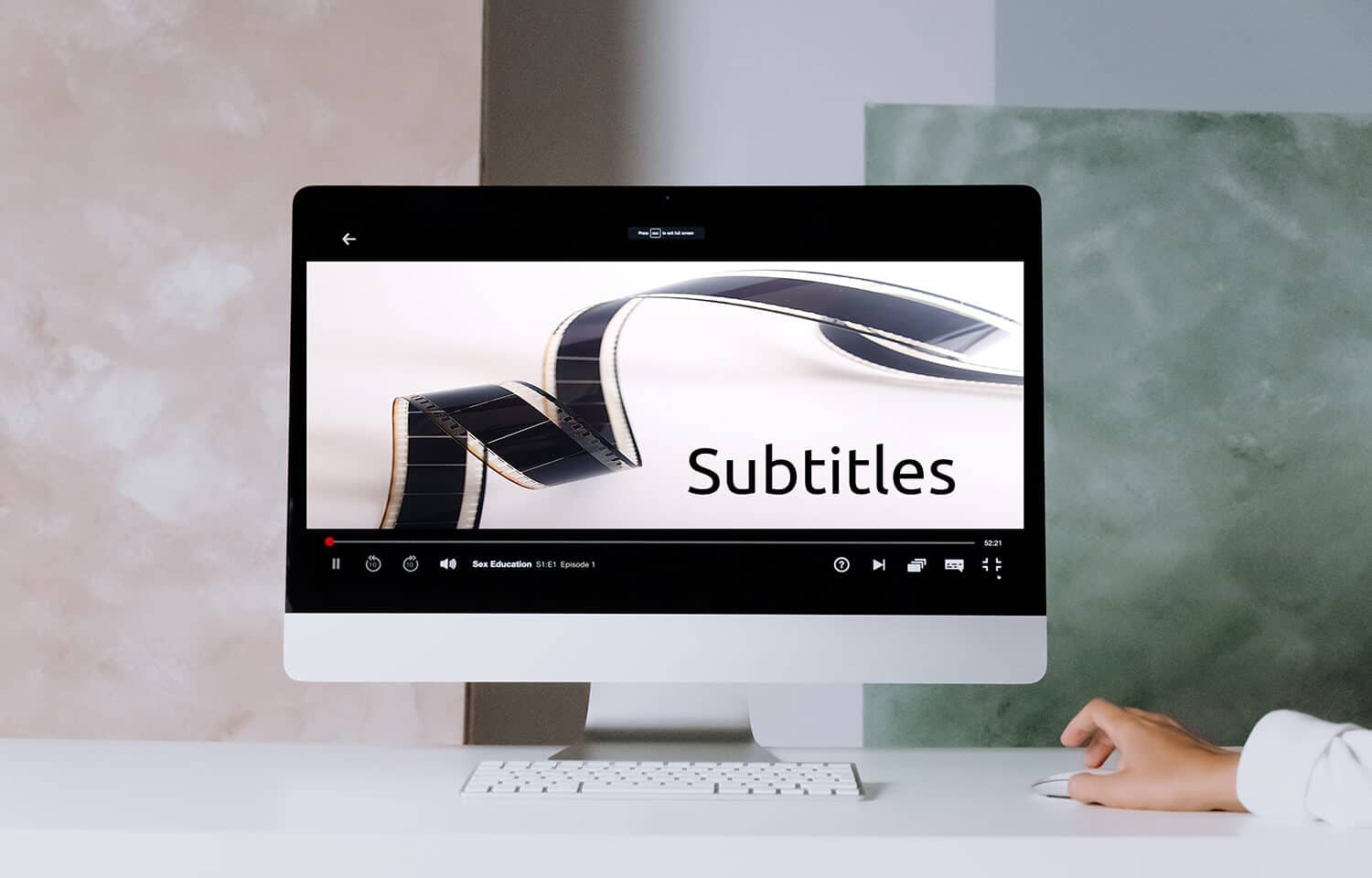Transcription Vs Subtitling: Understanding The Differences And Similarities

Transcription and subtitling are two methods used to convey spoken words into written form.
While they may seem interchangeable, they serve distinct purposes and have unique features.
Both methods have their own advantages and challenges, and understanding their differences and similarities is crucial for anyone seeking to effectively communicate with their audience through written media.
In this article, we’ll explore the differences and similarities between transcription and subtitling.
What is Audio Transcription?
Transcription is the process of converting spoken words or audio content into written text.
It involves listening to an audio or video recording and accurately transcribing every spoken word into a written document, often using specialized software or equipment.
Transcription is commonly used in a variety of industries, such as journalism, law, medicine, and entertainment, to produce written records of interviews, speeches, meetings, and other spoken content.
Transcription can be done manually by a human transcriber, or through the use of automated speech recognition technology.
There are several industries that commonly use transcription, including:
1. Legal:
Transcription is often used in the legal industry to create written records of legal proceedings such as court hearings, depositions, and trials.
2. Media:
Transcription is used in the media industry to transcribe interviews, speeches, and other content for news outlets, radio shows, and podcasts.
3. Businesses:
Transcription is used in the business industry to transcribe meetings, conferences, and presentations for record-keeping and future reference.
4. Education:
Transcription is used in the education industry to transcribe lectures, seminars, and other educational content for students with hearing impairments or for future reference.
What is Subtitling?
Subtitling is the process of displaying text on the screen to provide a translated or written version of spoken dialogue in a video or movie.
Subtitles are typically placed at the bottom of the screen, synchronized with the timing of the spoken words, and often include additional information such as the identity of the speaker or sound effects.
Subtitling is commonly used to translate content from one language to another, but it can also be used to provide a written version of dialogue for viewers who are deaf or hard of hearing.
Subtitling requires not only an accurate translation of the spoken words, but also careful consideration of timing, length, and formatting to ensure that the subtitles are clear and easy to read without interfering with the viewer’s enjoyment of the content.
There are several industries that commonly use subtitling, including:

1. Entertainment:
Subtitling is widely used in the entertainment industry to translate movies, TV shows, and other video content from one language to another for a global audience.
2. Education:
Subtitling is used in the education industry to provide subtitles for educational videos, webinars, and online courses, making them accessible to students who are deaf or hard of hearing.
3. Advertising:
Subtitling is used in the advertising industry to add subtitles to commercials and other promotional videos, making them accessible to a wider audience.
4. Government:
Subtitling is used in the government sector to add subtitles to public service announcements and other informational videos, making them accessible to people with hearing impairments.
5. Non-profit:
Subtitling is used in the non-profit sector to add subtitles to educational and awareness-raising videos about social issues, making them accessible to people from different lingual backgrounds and cultural backgrounds.
Differences between Transcription and Subtitling
1. Accuracy:
Transcription requires precision in capturing spoken words, including all the nuances, accents, and background noise.
Subtitling, on the other hand, requires accuracy in translation and timing, as the subtitles need to match the spoken words on the screen and convey the same meaning and tone as the original dialogue.
2. Purpose:
Transcription is focused on creating a written version of audio content, usually for reference, analysis, or sharing with others who may not have access to the original recording.
Subtitling, on the other hand, is geared towards providing written versions of video content, usually for accessibility, translation, or reaching a wider audience.
3. Techniques:
Transcription can be done manually by a human transcriber, who listens to the audio recording and types out the spoken words. Automated speech recognition technology is also available, which uses software to transcribe spoken words into text.
While subtitling requires specific subtitling software and timing techniques, to ensure that the subtitles are synced with the spoken words and displayed in a clear and readable format.
4. Content type:
Transcription is typically used for content that is primarily audio-based, such as interviews, podcasts, and conference calls.
While subtitling is used for video content, such as movies, TV shows, and online videos.
5. Context:
Transcription is often used in contexts where a written record of spoken content is necessary, such as in legal proceedings or medical records.
Subtitling is used in contexts where the video content is meant to be watched and understood, such as in entertainment or educational videos.
Similarities between Transcription and Subtitling
1. Language proficiency:
Both transcription and subtitling require a high level of language proficiency, as well as the ability to understand different accents and dialects.
Transcribers and subtitlers need to be fluent in the source language, and also have a good understanding of the target language, as they may need to translate spoken words into a different language.
2. Attention to detail:
Both transcription and subtitling require a great deal of attention to detail, as even small errors can significantly impact the accuracy and clarity of the final product.
Transcribers need to be able to capture every word spoken, including non-verbal cues and background noise, while subtitlers need to ensure that the subtitles are properly timed and formatted and that the translations accurately convey the meaning of the original dialogue.
3. Accessibility:
Both transcription and subtitling can be used to make audio and video content more accessible to a wider audience.
Transcription can help people who are deaf or hard of hearing to understand spoken content while subtitling can provide translations for people who speak a different language, as well as help those with hearing impairments to follow the dialogue.
4. Applications:
Both transcription and subtitling have important applications in a variety of industries, from legal and medical to entertainment and education.
